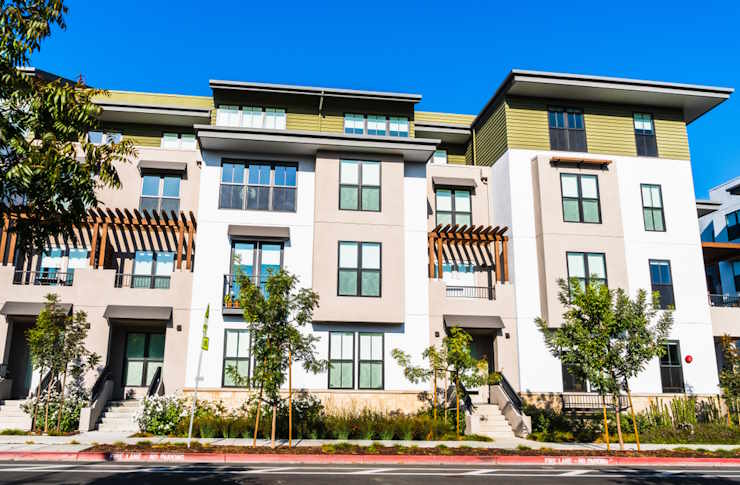Title: Reverse Gentrification: The Urban Housing Renaissance
Introduction: In a surprising twist to traditional urban development patterns, a new phenomenon is reshaping city landscapes across the globe. Reverse gentrification, a trend where historically affluent neighborhoods experience an influx of middle-class and working-class residents, is gaining momentum. This 60-word teaser explores the economic forces, social dynamics, and real estate implications of this urban housing renaissance, offering fresh insights into how it's transforming property markets, community structures, and investment strategies in unexpected ways.

The roots of this trend can be traced back to various economic and social factors. Economic downturns, changing work patterns, and shifting cultural preferences have all contributed to the reshaping of urban landscapes. As property values in certain upscale areas plateau or decline, opportunities arise for a more diverse range of residents to move in, altering the socio-economic makeup of these neighborhoods.
Drivers Behind the Trend
Several key factors are fueling the reverse gentrification movement. One significant driver is the changing nature of work, particularly the rise of remote and flexible work arrangements. This shift has reduced the necessity for many professionals to live in close proximity to central business districts, traditionally associated with higher property values.
Another contributing factor is the evolving preferences of younger generations. Millennials and Gen Z often prioritize experiences and lifestyle over traditional status symbols, leading some to opt for more affordable housing in previously upscale areas. This allows them to redirect their resources towards other priorities while still enjoying the amenities and infrastructure of well-established neighborhoods.
Economic pressures also play a crucial role. In some cities, the cost of maintaining large, high-end properties has become prohibitive, leading to subdivisions or conversions into multi-unit dwellings. This creates more accessible entry points for middle-income buyers or renters in areas that were once out of reach.
Impact on Real Estate Markets
The emergence of reverse gentrification is having profound effects on real estate markets in affected areas. Property values in these neighborhoods may experience a period of adjustment as the demographic shift occurs. While this could lead to short-term price fluctuations, it often results in a more stable, diverse housing market in the long run.
For investors, this trend presents both challenges and opportunities. Traditional investment strategies focused on high-end properties in exclusive neighborhoods may need to be reevaluated. Instead, there’s growing potential in identifying properties suitable for conversion into multi-unit dwellings or in targeting renovations that cater to a broader range of income levels.
Real estate developers are also adapting to this trend by reimagining luxury developments. Some are incorporating a mix of housing types and price points within single projects, creating more inclusive communities that can withstand market fluctuations and appeal to a wider demographic.
Community and Social Implications
Reverse gentrification brings about significant changes to the social fabric of affected neighborhoods. As communities become more economically diverse, there’s potential for increased social interaction across different income groups. This can lead to more vibrant, dynamic neighborhoods with a rich tapestry of cultures and experiences.
However, this transition is not without challenges. Long-time residents may struggle with the changing character of their neighborhoods, and there can be tensions between new and existing community members. Successfully navigating these changes often requires proactive community engagement and thoughtful urban planning to ensure that the needs of all residents are addressed.
On the positive side, reverse gentrification can breathe new life into areas that may have been stagnating. The influx of new residents can support local businesses, encourage the development of diverse amenities, and contribute to a more sustainable urban ecosystem.
Future Outlook and Considerations
As reverse gentrification continues to reshape urban landscapes, it’s crucial for real estate professionals, policymakers, and community leaders to stay ahead of the curve. Adapting to this trend requires a nuanced understanding of local market dynamics, demographic shifts, and changing consumer preferences.
For homebuyers and investors, areas experiencing reverse gentrification may offer unique opportunities. These neighborhoods often combine the charm and infrastructure of established areas with more accessible price points. However, it’s essential to conduct thorough research and consider long-term trends when making investment decisions in these evolving markets.
Urban planners and policymakers face the challenge of managing this transition in ways that benefit all community members. This may involve implementing policies that encourage mixed-income housing, supporting small businesses, and ensuring that public services and infrastructure keep pace with changing neighborhood needs.
As we look to the future, reverse gentrification has the potential to create more inclusive, diverse, and resilient urban communities. By embracing this trend thoughtfully, cities can work towards more equitable housing markets and vibrant, sustainable neighborhoods that cater to a wide range of residents. The key lies in balancing the interests of all stakeholders and viewing this phenomenon not as a threat, but as an opportunity for positive urban transformation.





